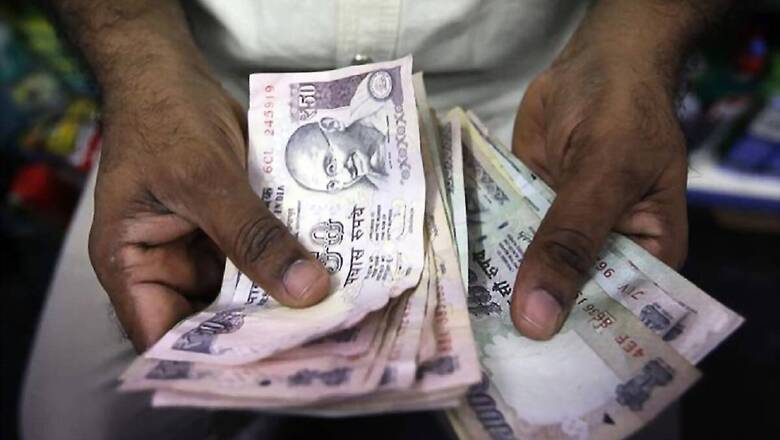
views
Investments of nearly Rs 1,000 crore in the National Monsoon Mission and the High Performance Computing programme of the Ministry of Earth Sciences (MoES) over the past five years have generated economic benefits worth Rs 50,000 crore for farmers, livestock rearers and fishermen, a survey has shown. The study conducted by the National Council of Applied Economic Research (NCAER) was based on a face-to-face survey of 6,098 respondents — 3,965 crop farmers, 757 marine fishermen and 1,376 livestock owners. Responses from over 2 lakh farmers were also collected through interactive voice response systems.
"The report provides an estimated income gain of nearly Rs 13,000 crore per year for agricultural and livestock farmers and an incremental benefit of nearly Rs 48,000 crore," the ministry said. The report was released by Earth Sciences Minister Harsh Vardhan at an event here on Tuesday.
A total of Rs 551 crore (Rs 400 crore from 2012 to 2017 and Rs 151 crore in 2017-18) was spent on the National Monsoon Mission while Rs 438.9 crore was incurred on the High Performance Computing programme to better weather forecast. A total of Rs 990 crore was spent on these two projects. For every rupee invested in the National Monsoon Mission and high-performance computing facilities of the ministry, the country has gained benefits worth Rs 50, resulting in fifty-fold gains, it said.
"On adding the economic gain accruing to agricultural households and fisher households, the present value of benefits accruing to the BPL households to rain-fed areas works out to be Rs 50,447 crore. The current level of investment is far less in comparison to the realisable benefits over the period of five years," the report said. Speaking at the event, Vardhan said the information through these projects helped farmers at various levels — from ensuring early or delayed sowing, changing the irrigation schedule, vaccination of livestock and better fodder management for them.
Ministry of Earth Sciences secretary M Rajeevan said the gains were not restricted to the monsoon-related information alone. It also extended to areas like better forecasting of pollution, especially for the national capital, and other flood management predictions. The augmentation of the National Monsoon Mission with high-performance computing facilities has helped the country in achieving a paradigm shift in weather and climate modelling for operational weather forecasts, the MoES secretary said.
"The successful development of a Global Ensemble Forecast System for short and medium-range prediction at 12 kilometres and its operationalisation in 2018 was made possible due to National Monsoon Mission and augmentation of the High-performance computing facilities from 1 PetaFlop to 10 PetaFlop, he added. Out of the 3,965 crop farmers interviewed across 121 districts of 11 states of the country, a large majority affirmed to be positively impacted by weather advisories, the ministry said.
"They confirmed having made changes in critical agricultural practices such as crop variety or breed, fertilizer or pesticide application schedule, irrigation or harvest time, arranging for storage, to reduce losses and increase income, the ministry added. From a total of 1,376 livestock owners interviewed across 92 districts of 10 states, a majority reported that weather advisories bear a positive impact on their livelihood. They confirmed to be making decisions about livestock management practices such as vaccinations, modification of sheds and shelters, and fodder practices based on weather parameters issued by IMD. Livestock farmers included both marginal and large, and those who owned cows, cattle, goats, and poultry, the ministry added.
With a total of 53 lakh BPL fisher-folk households, the report estimated income gains of Rs 663 crore per year and an incremental benefit of more than 2,000 crore for the next five years to fishermen alone. Out of the 757 marine fishermen across 34 districts in 7 states of India who were surveyed, a majority reported using ocean state forecasts before venturing into sea and for avoiding empty trips. According to them, their decisions based on ocean state forecasts and advisories have substantially improved their livelihood by reducing their operational cost, the ministry added.
.
Read all the Latest News, Breaking News and Coronavirus News here
















Comments
0 comment